Advertisement
Don’t be surprised if your bartender serves you a brown gin. Barrel-aged gins have been making their way into bars and retail as an old tradition gains traction among modern gin producers.
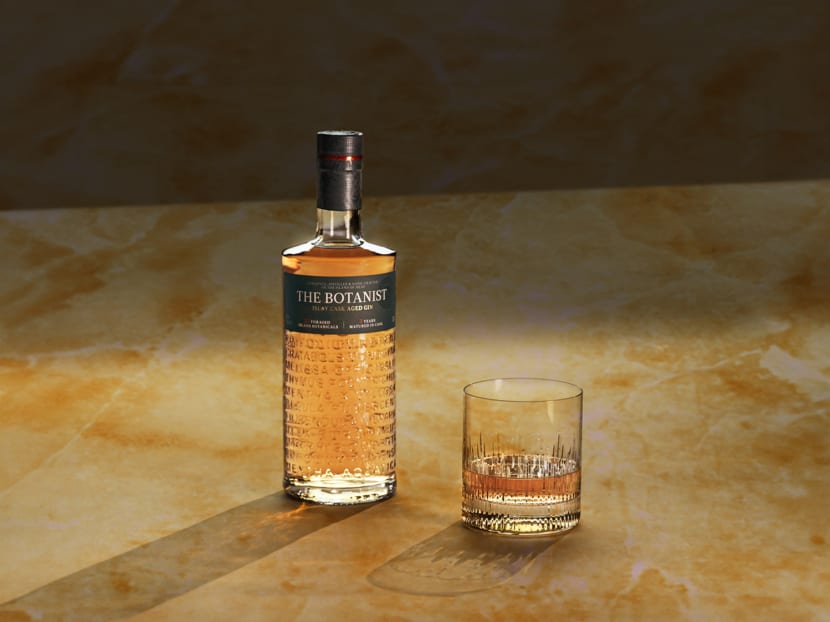
The Botanist Cask Aged Gin was aged in six different cask types. (Photo: The Botanist)
New: You can now listen to articles.

This audio is generated by an AI tool.
The amber liquid in my glass smells like a whisky. Its aromas of spices, vanilla, and honey hint at a Speyside dram. Its round texture and notes of coconut and toffee remind me of a young rum. But a scent of something herbaceous — as if the bartender here at Atlas bar had dropped a modicum of vermouth into it — gives an inkling of the real identity of this brown spirit, like a peculiar accent that accompanies a syllable in a foreign tongue.
My drink is actually a gin — a cask-aged gin from The Botanist, a gin producer based in Islay, Scotland. The spirit was aged in six different cask types for a minimum three of years before they are blended into a cuvee. The Botanist did not list all the cask types, only revealing that ex-Amarone (a red wine from Italy’s Veneto region) and rum casks were among those used.
Acquiring barrels is a privilege The Botanist has always enjoyed: The gin production team is part of Bruichladdich Distillery, a whisky producer. Adam Hannett, head distiller of Bruichladdich, said they have access to more than 200 types of casks in their warehouse and “have been experimenting with cask-aged gin for a number of years now”. “We have a good feel for how [the gin] matures and develops over different time frames in a wide range of casks,” he said.
The Botanist Cask Aged Gin, along with The Botanist Rested Gin (a cuvee of 16 different cask types and aged for a minimum of six months), was launched in Singapore in June, joining a growing number of cask-aged gins available in the retail scene, both offline and online. Homegrown distilleries have also gotten in on the act: Brass Lion Distillery made a barrel-aged spirit that has since sold out, while Tanglin Gin has a seasonal Barrel Aged Gin, which spent a few months in Garrison Brothers Bourbon barrels.
Gin aged in former wine barrels is also becoming trendy: Kyoto-based gin producer Ki No Bi offers Edition G, a gin aged in barrels that once held Henri Giraud champagne. Australian gin producer Four Pillars makes Barrel Aged Bloody Underhill Shiraz, a gin matured in ex-Shiraz barrels from Yarra Valley-based Yarra Yering winery.
AN OLD PRACTICE IS REVIVED
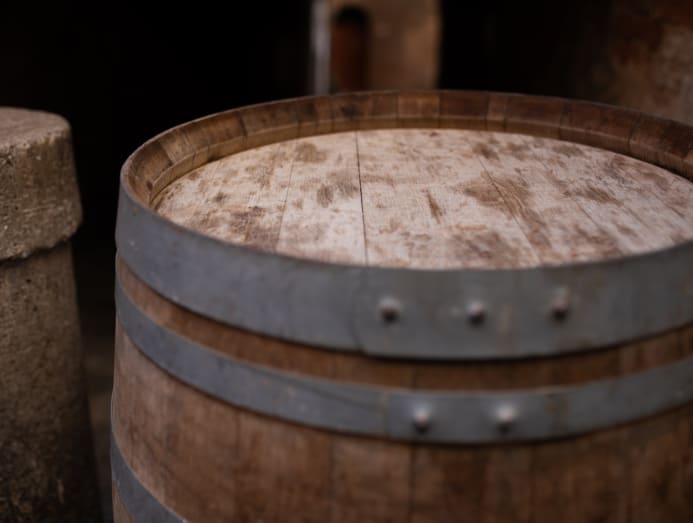
There are no rules governing the barrel-ageing of gin: Gin makers are free to use any barrel, for any length of time; they pretty much have a carte blanche.
Ageing or storing gin in wood is not a new method, though. The earliest form of gin was believed to be born in the 11th century, when Benedictine monks in Salerno, Italy distilled juniper-infused wine to create a medicinal spirit, which later made its way across Europe. In the 16th century, the Dutch named the spirit “jenever” (Dutch for “juniper”) and began storing it in oak barrels.
By the 18th century, the English were transporting the spirit, which they called gin (a truncation of “jenever”), in oak barrels on ship voyages; the sturdy wooden casks were more cost-effective than breakable glass vessels. Shipping the gin safely, rather than ageing them intentionally, was the main goal. Oftentimes, when they arrived at their destinations, the spirits were anything but clear, having absorbed some colour from the barrel as well as some of the oak’s flavours.
Are modern barrel-aged gins, which are aged intentionally and look like brown spirits, considered gimmicky then? Sean Ou, head of education of The Beverage Clique, a wine and spirits training centre and consultancy, thinks they aren’t. Instead, he considers a barrel-aged gin a sub-category because of its link to a past tradition.
“There’s always a place for a sub-category [of spirits] if it provides a diversity of flavours somewhat different from the original, one that is pleasant and positive,” he said. But he noted that cask-aged gins straddle a fine line before they tread into brown spirit territory and start tasting like a whisky, something he has “unfortunately experienced in the past”.
“To make a good, balanced version [of a cask-aged gin] that can be appreciated is a tough task; if it retains its original gin flavours with a touch of oak, it could be seen as a good thing,” he said.
Bruichladdich’s Hannett noted that for a spirit to be classed as a gin, “the liquid must be juniper-forward”. He said: “With our Cask Aged and Cask Rested gins, we wanted to retain the [original] fresh, herbaceous note that runs through the heart of The Botanist. Taking that liquid and ageing it allows us the opportunity to experiment and push the boundaries of people’s expectations of gin.
“With a lot of gins, flavour is added during distillation. But here, we have taken a purist approach of allowing time and cask to do their work, and we are proud of the results.”
Ou said that cask-aged gins can play an interesting role in the bar scene, whether it’s “providing a more dynamic flavour profile for cocktails or just for sipping pleasure”. He would use such a gin to replace the brown spirit in a simple cocktail, such as the Highball. “The classic flavours of juniper and citrus in a cask-aged gin may already be rather delicate due to the oak treatment, [so] having a mixer such as soda would not musk those flavours — it might also give [the cocktail] a bit of an aromatic lift,” he said.
Here are four barrel-aged gins you should try.
THE BOTANIST CASK AGED GIN
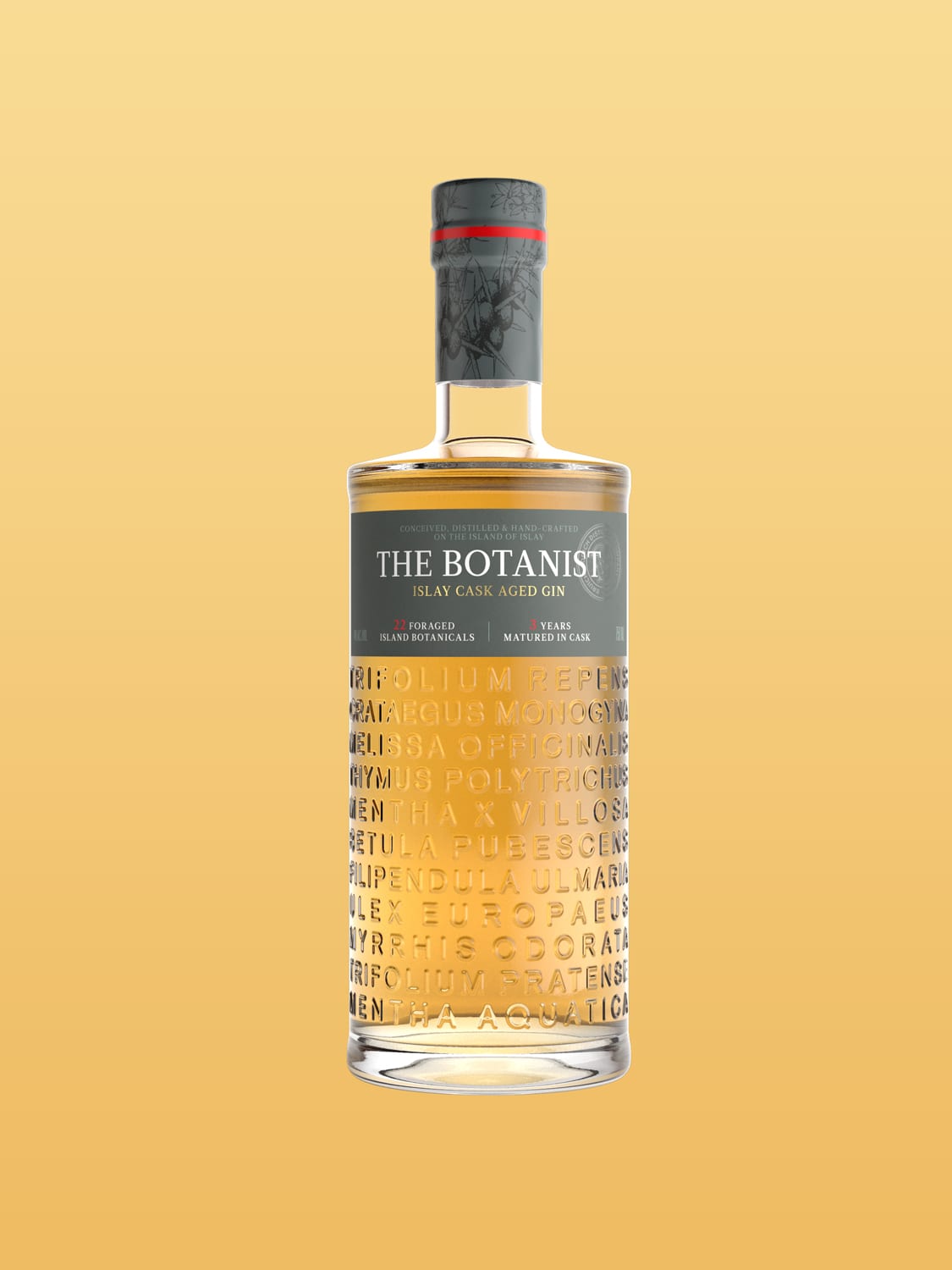
Aged for three years in six cask types, this spirit has shades of whisky and rum as well as a floral and juniper accent that tethers it to its profile as a gin.
Lidiyanah ‘Yana’ Keller, beverage director of Atlas bar, recommends using the gin to replace the whisky component in a Manhattan cocktail (a blend of whisky, vermouth and bitters). “The gin adds an intriguing botanical dimension. It balances the bitters as well as the sweetness of the vermouth,” she said.
S$87 (approx) / £50.00, from The Botanist
KI NO BI EDITION G
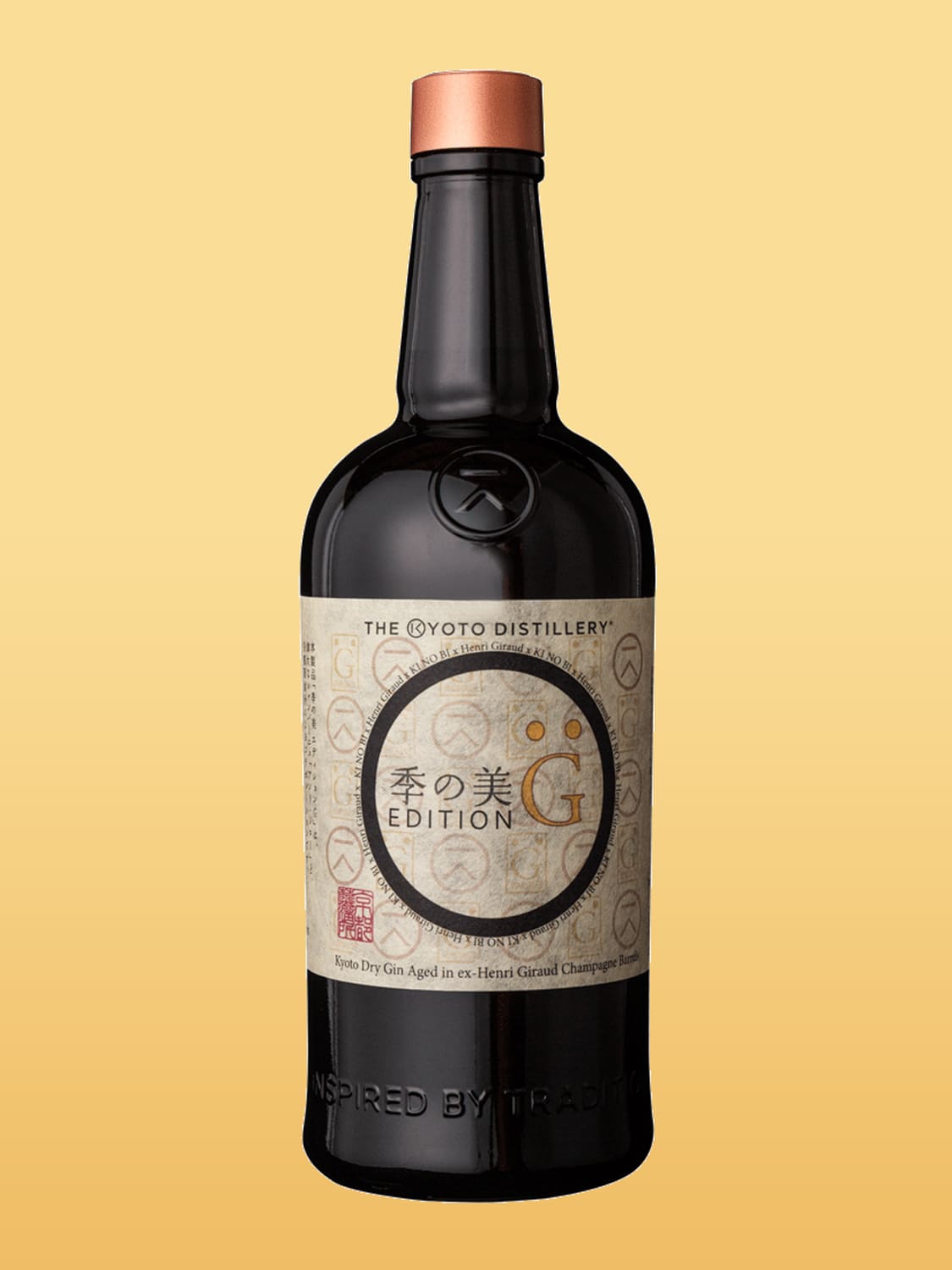
A collaboration between Ki No Bi and Ay-based Champagne Henri Giraud, the limited-release Edition G was aged in the latter’s champagne casks for 18 to 24 months. The result is a layered, enticing sip with vanilla and caramel touches that lift the gin’s botanical character of juniper, yuzu, green tea, ginger, and shiso.
S$255, from Le Cercle by Pernod Ricard. Interested buyers, please email hello [at] le-cercle.sg ()
FOUR PILLARS WHISKY BARREL GIN

Aussie gin maker Four Pillars has been dabbling with cask-ageing gin ever since they were established in 2013. Teaming up with Tasmania-based whisky producer Lark Distillery, it aged its gin in sherry and Apera (Australian fortified wine) casks for four years before transferring it to Lark whisky barrels for a further six months of maturation. This is a dark, brooding gin. Expect a whirl of citrus, spices, coffee, pecans, and vanilla.
Interested buyers, please email info [at] fourpillarsgin.com.au ()
KYRO DARK GIN
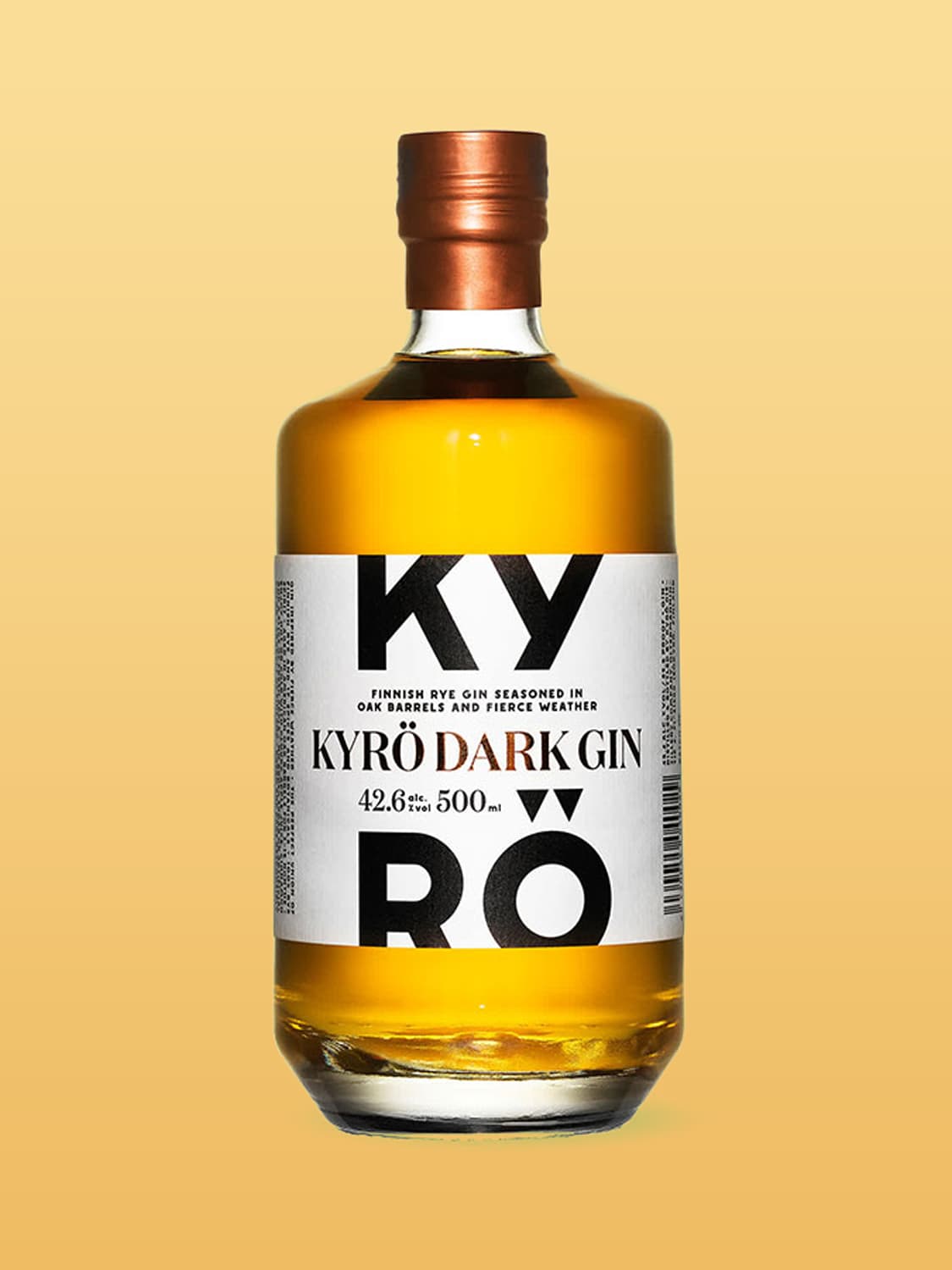
Award-winning Finnish distillery Kyro produces a range of gins and rye whiskies, ageing and finishing their spirits in all manner of casks. Distilled from wholegrain rye, the gin is aged in American oak barrels for three to 12 months. The honeyed character of the gin is backed up by touches of orange peel and pepper. Kyro recommends enjoying this gin with apple juice, cinnamon and an apple slice.
S$81, from Alchohaul


































